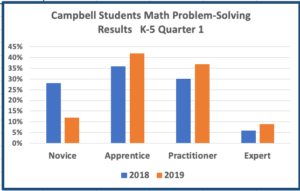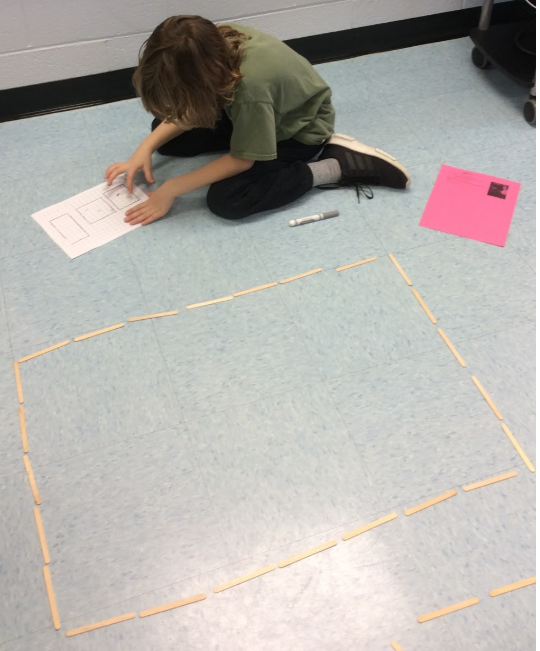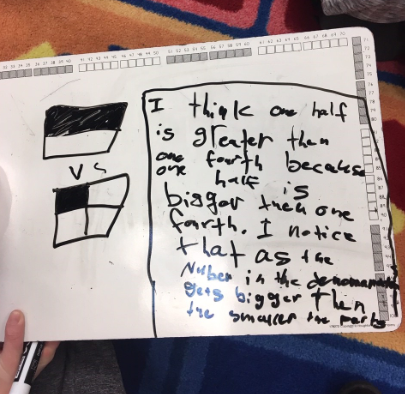Campbell students are problem solvers as they demonstrate higher order and complex thinking in math.
Overview
Campbell students are increasing their ability in mathematical problem solving as students in kindergarten through 5th grade engage in rich problem-solving tasks that provide multiple opportunities to demonstrate higher order and complex thinking. Students have the opportunity to grapple with mathematical ideas before exposure to standard algorithm and practice producing a variety of strategies to solve unknown problems. Students are met with high quality instruction as teachers prepare for student thinking, solutions, and misconceptions by performing the task themselves. Students are continuing to grow as mathematicians through reflection and self-evaluation using rubrics.
Campbell students have outperformed the state and their peer district (other Title I schools) consistently, for 5 out of 6 years. In school year 2017-2018, there was a slight decrease across the district and state in overall pass rates due to an adjustment of the Virginia SOL test. In an effort to address this decline, Campbell has risen to the challenge with a strong focus on math instruction and learning.
Data
All students at Campbell have a pattern of strong achievement in math. Student pass rates indicate that Campbell outperforms other APS Title I schools and often the state in math. In 2018, the pass advanced rate for Campbell Hispanic students exceeded the rate within APS and the state. While Campbell’s overall scores were commensurate with the rates for the district and the state, Campbell’s Hispanic students outperformed the district and the state as the percentage of students with an advanced pass rate rose from 8% to 12%. Students who identify as Hispanic make up 38% of the student population at Campbell Elementary. The increase in student performance reflects the mathematical culture developed around problem solving and frequent analysis of problem-solving approaches and strategies for all students.
Click graph for larger view.
Campbell students are demonstrating higher levels of competence on open ended math problem solving this year than last year. Using a rubric based on the complexity of their responses, Campbell students have shown growth in problem solving from the first quarter of school year 2017-2018 to the first quarter of school year 2018-2019. Click graph for larger view.
The percentage of students demonstrating a correct solution (Practitioner or Expert) increased from 36% last year to 46% this year. Likewise, the percentage of students not demonstrating basic understanding (Novice) decreased from 28% last year to 12% this year.
Communicating Mathematical Thinking
Students deepen their understanding through opportunities to grapple, take risks, and justify their reasoning. Students are encouraged to explain their mathematical thinking in visual representations, written words and verbal communication.
During math workshop, students communicate their ideas to peers through turn and talk and cooperative learning. In this video 2nd graders use turn and talk to explain their mathematical thinking during a workshop mini-lesson:
The following video features a student explaining and justifying her answer. The student has solved a problem and is grappling with generalizing the rule to solve future problems.
Students confer with peers to revise and refine their mathematical thinking and find solutions to problems.
Rich Tasks That Require Higher Order and Complex Thinking
Students are presented with open ended real world problems, coined as “rich tasks”, to promote problem solving in the classroom. Students’ diverse thinking and multiple-solutions strategies are celebrated and encouraged. To solve a pressing problem about the class fish, students applied their knowledge of fractions and decimals to solve for the amount of food the class fish should be served each day. With the problem allowing for multiple solutions, students were asked to justify their reasoning with evidence and accurate calculations to make sure Bubbles the fish was fed appropriately.
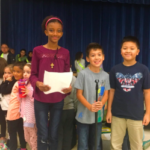 Feed Bubbles the Fish #1 Feed Bubbles the Fish #2
Feed Bubbles the Fish #1 Feed Bubbles the Fish #2
Teachers use rubrics and student reflection to encourage students to think more deeply and explain their mathematical thinking. Below is an example of a 2nd/3rd grade rubric and student reflection template developed by Campbell staff. 
Integrating Math into Expeditions
Historically, Implementation Review results indicated that very few if any Campbell expeditions integrated math into the products. In recent years, increased integration of mathematics has been a focus. During the 5th grade’s fall expedition in 2018, “Miniature Kingdoms,” the anchor text Tree of Life was used to reinforce the unfathomable quantity of organisms on Earth. Using the data from the book, students rounded the numbers and created a proportional tree with leaves to represented the proportion of organisms in each Kingdom. During the expedition showcase, students were on hand to explain their findings. This project required sophisticated understanding of math including ratios.
 In the 2019 kindergarten spring expedition, “Water, Water Everywhere,” students learned about water and its importance. Classes investigated the amount of water used in various ways throughout a day and recorded it on a graph.They used this data to raise awareness about how much water they consume. This led to their creation of PSA’s reminding others at Campbell to try to conserve water.
In the 2019 kindergarten spring expedition, “Water, Water Everywhere,” students learned about water and its importance. Classes investigated the amount of water used in various ways throughout a day and recorded it on a graph.They used this data to raise awareness about how much water they consume. This led to their creation of PSA’s reminding others at Campbell to try to conserve water.
In 2017, several expeditions were created or revised to include math content and increase problem solving across disciplines. In “Counting on Fruits and Vegetables” expedition, second grade students conducted a research study to learn more about the questions they had about food habits in the Campbell community. Students collected data at home and at school to better understand the choices people were making. Students compared the data to recommended nutritional guidelines. Results were presented in graphical representations.








In 2018, the expedition was modified to include more problem solving and economics. The guiding question was, “Do financial, cultural and nutritional needs impact our economic choices?” Second graders surveyed Campbell families to find out what foods are most popular. Students then did field work at local cultural grocery stores and supermarkets.








After completing field work, second graders created a grocery circular providing recommendations to community members about comparative costs and other factors to consider when purchasing groceries. This authentic use of mathematical critical thinking skills solves a community need.
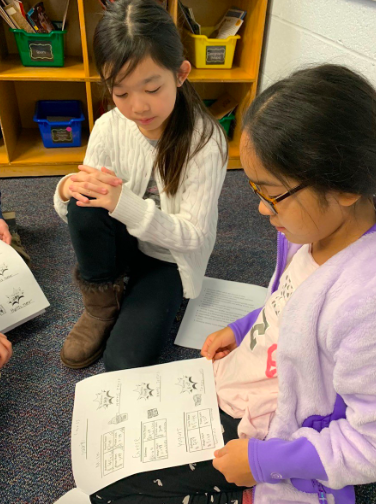
Math Integration Contributes to a Culture of Math
Teachers integrate math into a variety of instructional activities and projects. Below is an illustrative example of math integration into art:












The art teacher and Math Coach co-taught integrated art and math lessons to group of 5th grade students. Students studied geometry through planning and creating beautiful outdoor designs using diameter, radius, and angles.
 Contact
Contact  Calendars
Calendars Careers
Careers Engage
Engage  District
District





